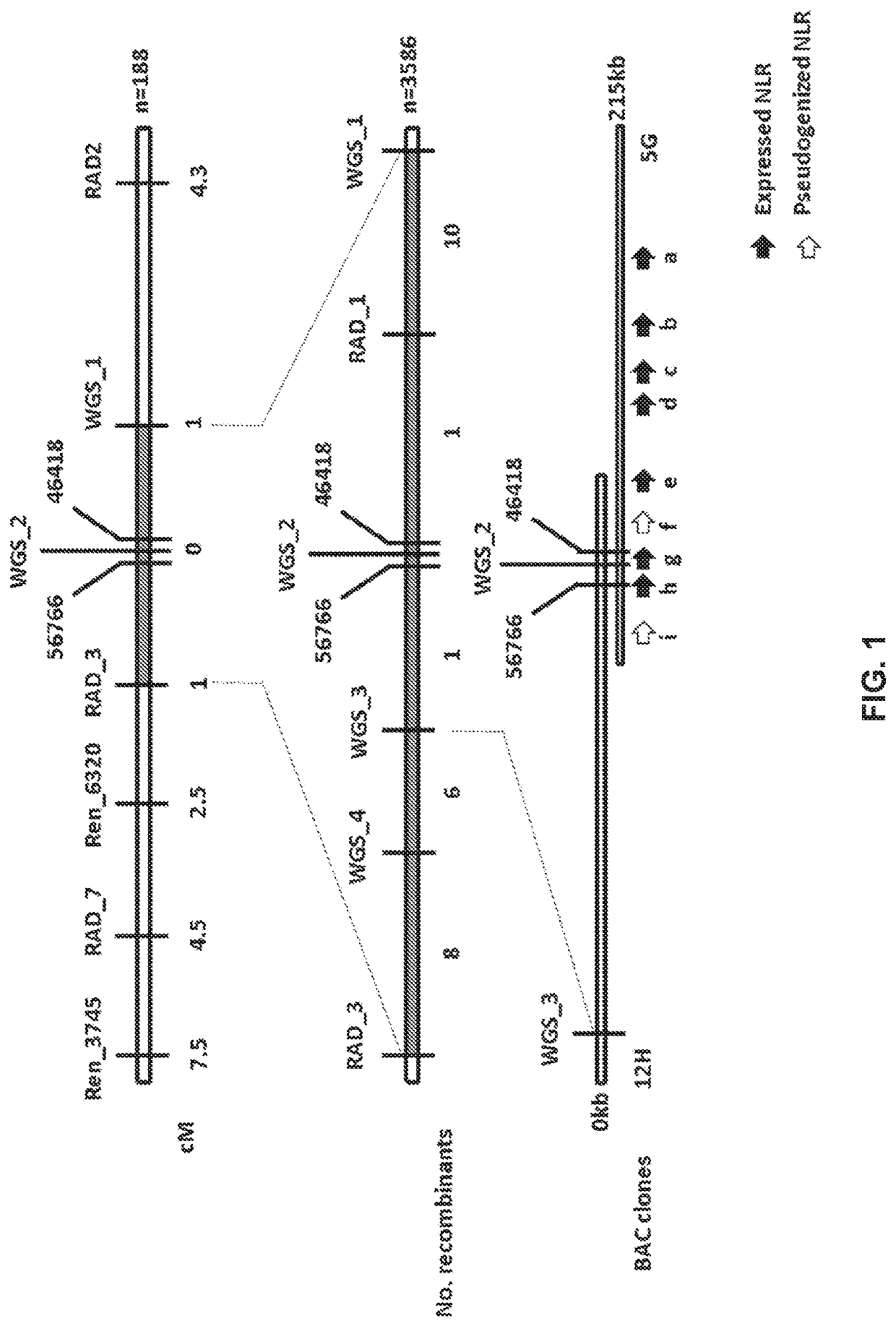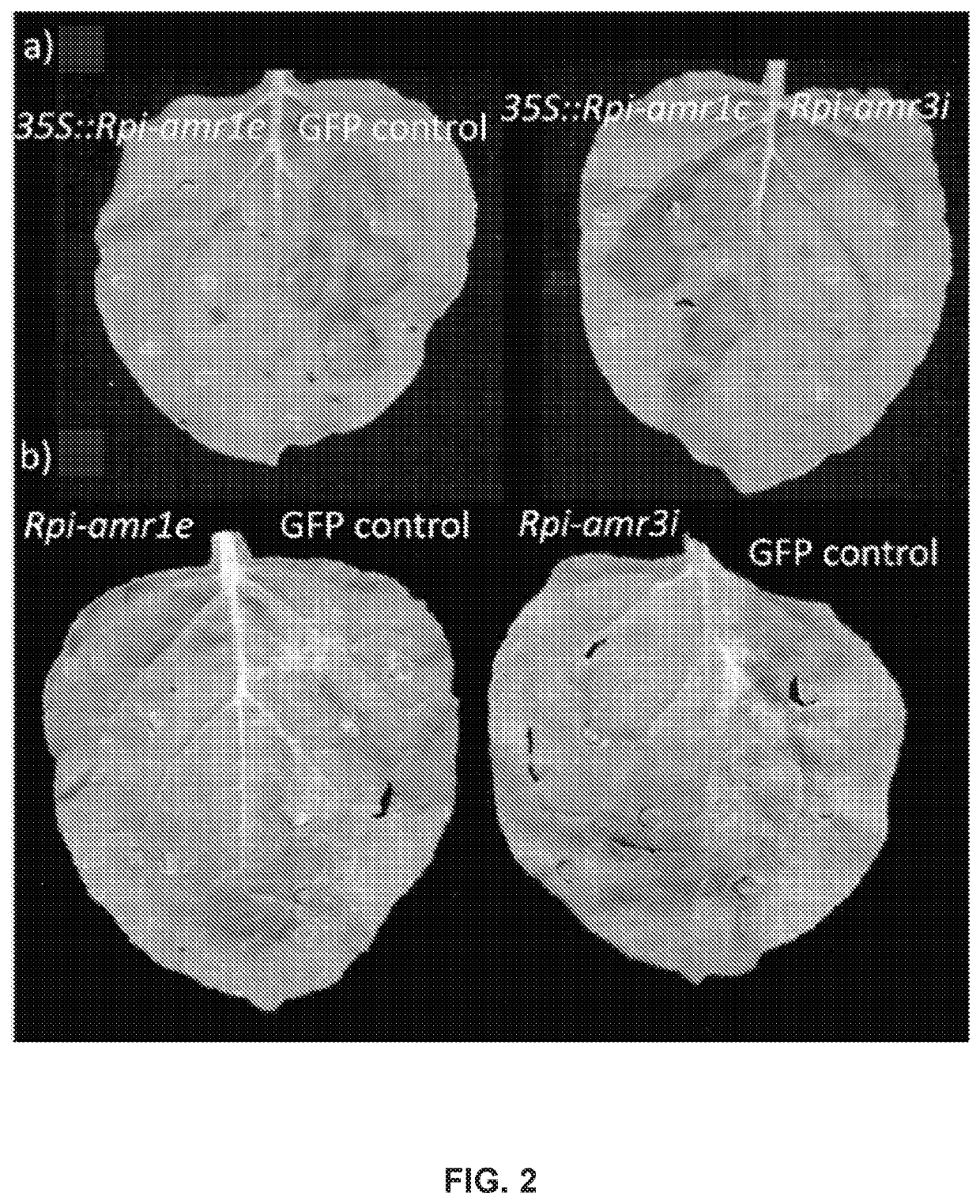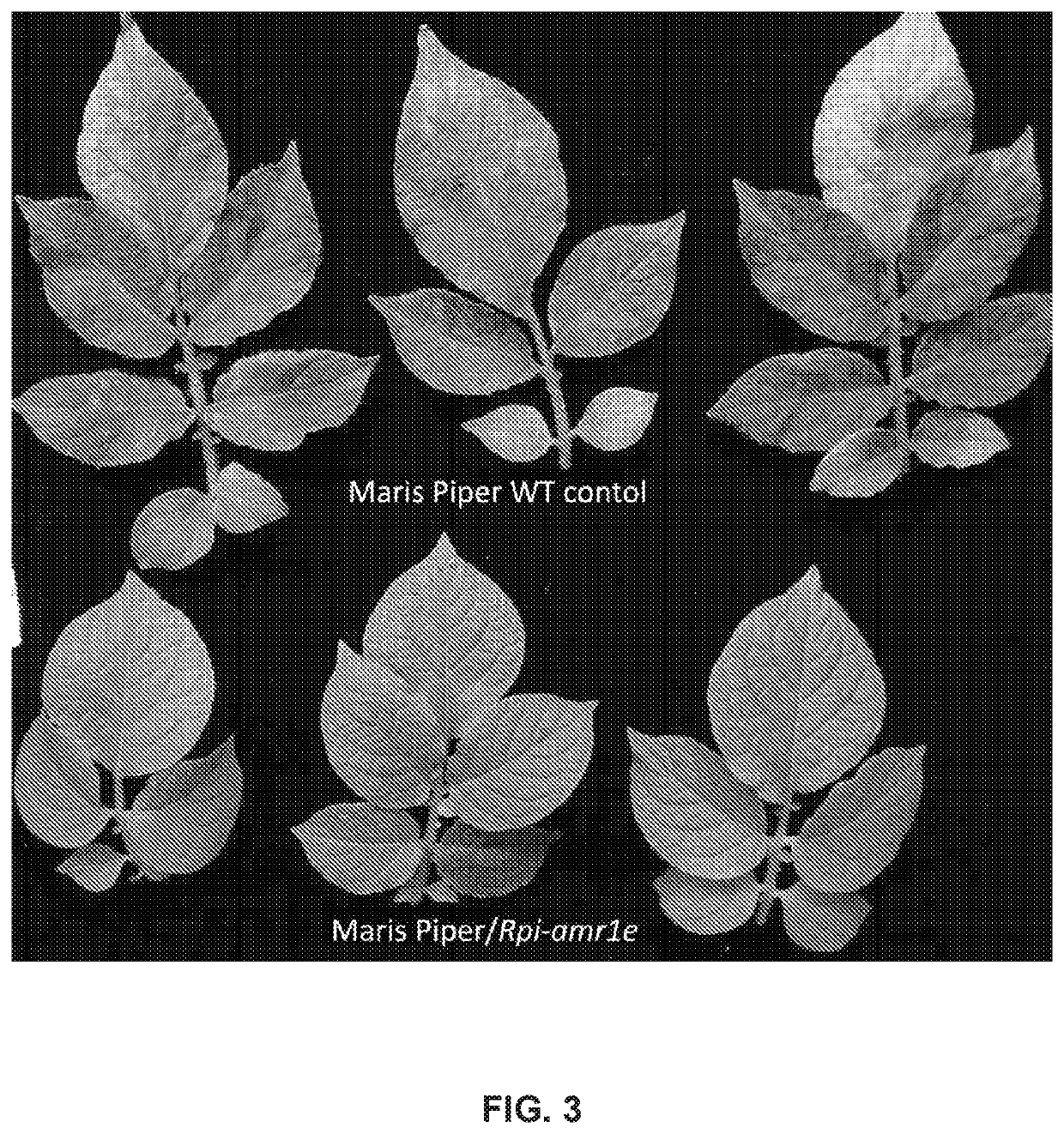Late blight resistance genes and methods of use
a resistance gene and gene technology, applied in the field of gene isolation and plant improvement, can solve the problems of rpi gene that is overcome, laborious and slow process, and laborious time-consuming classical map-based cloning, and achieve the effect of limiting plant diseas
- Summary
- Abstract
- Description
- Claims
- Application Information
AI Technical Summary
Benefits of technology
Problems solved by technology
Method used
Image
Examples
embodiment 1
2. The nucleic acid molecule of embodiment 1, wherein the nucleic acid molecule is an isolated nucleic acid molecule.
3. An expression cassette comprising the nucleic acid molecule of embodiment 1 or 2 and an operably linked heterologous promoter.
4. A vector comprising the nucleic acid molecule of embodiment 1 or 2 or the expression cassette of embodiment 3.
embodiment 4
5. A vector of embodiment 4, further comprising an additional R gene.
6. A host cell transformed with the nucleic acid molecule of embodiment 1 or 2, the expression cassette of embodiment 3, or the vector of embodiment 4 or 5.
embodiment 6
7. The host cell of embodiment 6, wherein the host cell is a plant cell, a bacterium, a fungal cell, or an animal cell.
8. The host cell of embodiment 6 or 7, wherein the host cell is a solanaceous plant cell.
9. A plant or plant cell comprising the nucleic acid molecule of embodiment 1 or 2, the expression cassette of embodiment 3, or the vector of embodiment 4 or 5.
PUM
| Property | Measurement | Unit |
|---|---|---|
| resistance | aaaaa | aaaaa |
| nucleic acid | aaaaa | aaaaa |
| size | aaaaa | aaaaa |
Abstract
Description
Claims
Application Information
 Login to View More
Login to View More - R&D
- Intellectual Property
- Life Sciences
- Materials
- Tech Scout
- Unparalleled Data Quality
- Higher Quality Content
- 60% Fewer Hallucinations
Browse by: Latest US Patents, China's latest patents, Technical Efficacy Thesaurus, Application Domain, Technology Topic, Popular Technical Reports.
© 2025 PatSnap. All rights reserved.Legal|Privacy policy|Modern Slavery Act Transparency Statement|Sitemap|About US| Contact US: help@patsnap.com



